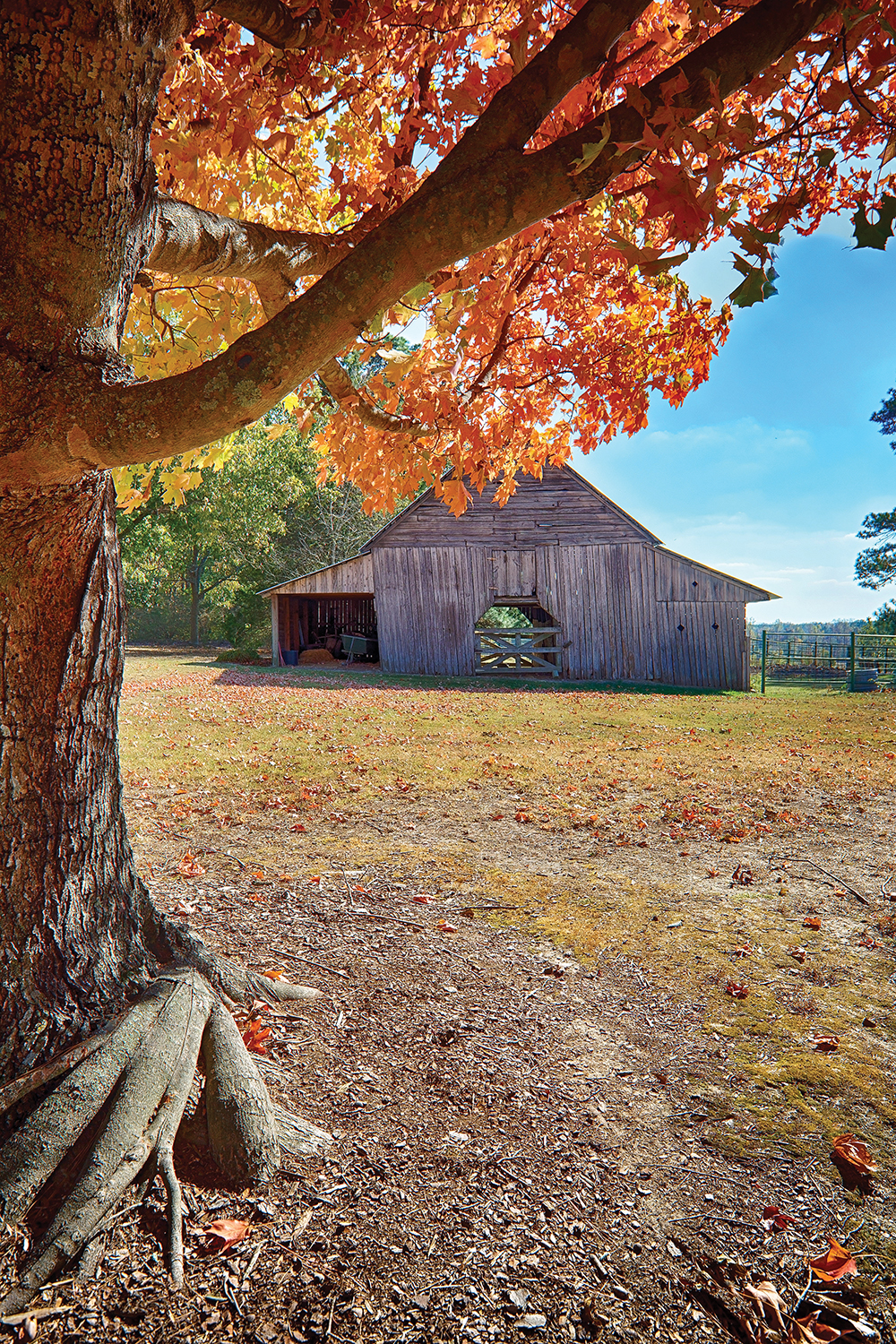
The Corbin Homestead near Joppa, Ala., is frozen in time, not re-created but preserved. Inside is a museum of a way of life no longer common in the South.
Randy Humphries, great-grandson of Thomas M. and Ella Wiley Corbin, has meticulously maintained the Homestead as it would have been circa 1925, complete with period-correct furnishings.
Flowers grow in the yard. An aura of long-standing human habitation imbues the place with life and peace. The farm maintains a herd of cattle and grows hay to feed them.
Randy heads a successful tractor parts supply business next to the Corbin Homestead. The second floor of his large office building is filled with museum-quality displays about his ancestors. His wife, Susie Humphries, taught biology and chemistry in the Albertville City School System and retired from teaching at Snead State Community College.
Randy’s grandmother, Cressie, was the fourth of 10 Corbin children. Cressie attended college and taught briefly at Welcome Public School near Joppa. She was teaching in Birmingham when she met and married James Alfred Douglas Ferguson, a New Yorker and Master Mason. Their daughter, Anne, was born in the Corbin farmhouse on April 20, 1930.
James was older, a man of the world, and not willing to make a life in Joppa. He lived and worked in Birmingham while Cressie and Anne stayed with the Corbins.
Randy says, “When my mother, Anne, was 18 months old, James came to Joppa intent on taking Cressie and the baby with him to New York. But Cressie refused to go. James took off in a hurry and ran the car into a ditch, so angry that he just left it there. I’ve never been able to find out what happened to that car.”
Cressie worked in the house and fields of the Homestead and raised her beautiful daughter. She never saw James again and never kept company with another man. She learned that James had previously been married and had a son. Cressie also never taught school again; it would have been unseemly for a woman in her situation to do so.
With 10 children in line to inherit, how did the Corbin Homestead come down to Randy intact? Ella died in 1953 and Tom died in 1958 after years of being lovingly cared for by Cressie. Cressie’s siblings gave her the home place in recognition of that care.
In 1950, Anne married Miles Humphries, a marriage that lasted 61 years. Anne inherited the place when Cressie died in 1973; Randy received the Homestead in the estate settlement upon Anne’s death in 2012.
A land for four generations
He is passionate about his heritage. “It would be impossible to set a price on the property. Four generations of our family have worked, walked on, and enjoyed our land. It has been like a dear friend, always there to comfort, heal, and provide us a livelihood.”
The Alabama Historical Commission designated the Corbin Homestead a significant landmark in 1999. The farmhouse was built in 1894 on an 80-acre homestead (later expanded to 120 acres) in the northeast corner of Cullman County. Other structures include a barn, buggy shed, corn crib, cotton house, well shed, outhouse, henhouse and a rock fence.
The farming operation included growing cotton, corn, peanuts, peas, and sorghum cane; a large peach and apple orchard; and maintenance of cattle, mules, hogs and yard chickens.
 Thomas Corbin, Randy’s great-grandfather, was a self-taught veterinarian and practiced veterinary medicine from 1902 to 1950. Eight of his and Ella’s children attended college, establishing education as an important goal for future generations. They attended Joppa Normal and Collegiate Institute through junior high, then transferred to Cullman High School and boarded with local families. The American Missionary Association arranged for some of the children to attend Wheaton College in Illinois.
Thomas Corbin, Randy’s great-grandfather, was a self-taught veterinarian and practiced veterinary medicine from 1902 to 1950. Eight of his and Ella’s children attended college, establishing education as an important goal for future generations. They attended Joppa Normal and Collegiate Institute through junior high, then transferred to Cullman High School and boarded with local families. The American Missionary Association arranged for some of the children to attend Wheaton College in Illinois.
Randy and Susie plans to teach youngsters history and the chemical processes used by the Corbins when, for example, they made lye soap, smoked pork in the smokehouse, or canned vegetables that were harvested from the garden.
Plans are to develop educational programs involving nature trails on the property for studying botany, geology and ecology. These programs will target topics appropriate for specific age groups and coordinate with the students’ established study plans.
People who come to the Corbin Homestead will see and hear about the artifacts and buildings, learn details about their lifestyle, watch the cattle in the pasture and walk the nature trails. Randy says his purpose is to help others “celebrate our cultural and natural heritage and to appreciate and understand our past and how it has shaped our lives.”n





